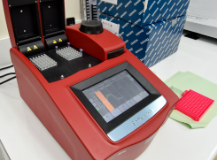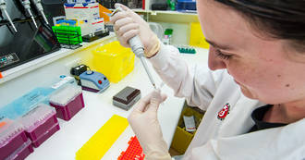





Hereditary ataxias are a group of genetic disorders characterised by slowly progressive gait incoordination, often with poor coordination of hands, speech and eye movements and frequent cerebellar atrophy.
The prevalence of autosomal dominant cerebellar ataxias is estimated to be of the order of 1-5 per 100,000 population, with SCA3 the most common worldwide, followed by SCA1, SCA2, SCA6 and SCA7. There are different patterns of distribution of these disorders in different ethnic groups, with a founder effect seen for some SCA sub-types. These 5 SCAs are all caused by triplet repeat expansions in the coding regions of the relevant genes.
Fluorescent PCR is used to perform this testing. The results of the assay can be visualised using GeneMarker software following fragment analysis on a genetic analyser. The possibility of very large expansions refractory to detection by standard methodology is excluded by the use of triplet-primed PCR assays when patients are apparently homozygous for alleles in ATXN2, ATXN3 or ATXN7. ATXN1 alleles within the overlap range between normal and pathogenic alleles (39-44 repeats) are subjected to fluorescent PCR and BmsI digestion to assess the presence or absence of CAT interruptions of the CAG repeat. Positive and negative controls are included in each assay.
|
Test |
Cost NZD |
Sample requirements |
Turnaround time |
|
CAG repeat expansion tests for SCA1, 2, 3, 6 and 7 |
500 |
4ml of whole blood in EDTA |
4 weeks For urgent cases please contact the laboratory |
|
Testing for individual SCAs |
200 |
4ml of whole blood in EDTA |
2 weeks For urgent cases please contact the laboratory |